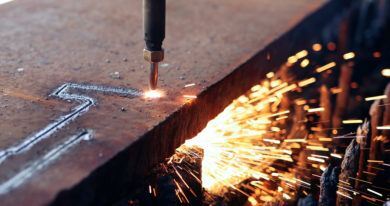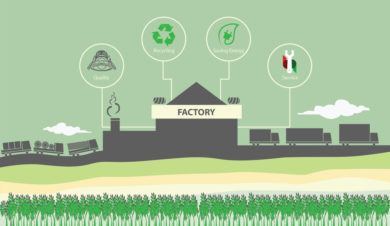Manufacturers are the largest consumers of material that is recycled from end-of-life products and industrial scrap. Manufacturers also can be among the largest suppliers of scrap materials.
In most manufacturing settings, there are multiple steps that involve molding or cutting materials before reaching the final product. As much as manufacturers try to minimize waste, it is inevitable that a certain amount of scrap will be left behind once the product goes out the door.
Finding a way to capture the economic value of that scrap is at the core of industrial recycling. And for more than 55 years, General Kinematics has helped manufacturers automate those processes from start to finish.
Incorporating more in-house recycling into the manufacturing process is one of the easiest ways to reduce a manufacturer’s carbon footprint, making both the company and the product greener.
It Makes Economic Sense
Incorporating a recycling program into a manufacturing process needs to start with a vision and strategy, accompanied by changes in the company’s culture and its processes. To accomplish this, manufacturers need to develop structures, systems, performance goals, and measurements in support of the program.
Communication is also an important factor in developing employee buy-in and encouraging creative thinking that will provide innovative solutions. Involving the engineering and design teams is not enough. Involve the employees who operate the manufacturing machines along with those are who are responsible for collecting and disposing of the scrap material. The employees with the greatest knowledge of the manufacturing process are best positioned to reduce scrap and other forms of waste that cost your company money.
One of the first steps is to determine which workstations are creating the bulk of the scrap materials and assessing how much of the scrap is recyclable in-house. Many times, waste from one manufacturing operation can be reprocessed into raw material for another.
If a manufacturer does not have the in-house capabilities to recycle the scrap, perhaps a partner with the complementary skills can be found. Teamwork could produce results that would benefit both companies. A good partner may be able to spot uses for scrap that are not obvious.
For instance, wood scraps can be ground into sawdust and then compressed into composite boards. Non-recyclable plastics can be shredded and pressed into low-cost building materials. Organics can be composted as “nutritional soil” for local parks. Cotton and denim scraps that cannot be reused in the garment industry can be recycled into a building insulation product. Paper and cardboard can be recycled into cellulose insulation. And, many metals can be melted and remolded for other uses.
In-House Recycling Takes Effort
Once the type and amount of recyclable scrap are identified, a workflow process must be developed to capture, remove, and store these materials. This will involve training employees to recognize the recyclable scrap and how it is to be handled.
One of the best ways to handle scrap is through technology and automation. General Kinematics produces a complete line of forestry, wood and biomass equipment and scrap processing solutions to recover and sort desirable materials.
In addition to recycling manufacturing scrap, many companies can save energy, natural resources, and in some instances, cost, by including post-consumer recycled material into their manufacturing process. In 2015 alone, more than 130 million metric tons of metal, paper, plastic, glass, textiles, rubber, and electronics, the equivalent of 393 empire state buildings, were recycled into specification grade material by the U.S. scrap recycling industry, according to ISRI the Institute of Scrap Recycling Industries, Inc.
It is estimated that each year, North American steel making furnaces consume nearly 70 million tons of domestic steel scrap in the production of new steel. Recycling is at the very heart of the steel industry’s commitment to sustainability. By using scrap to make new steel, the North American steel industry conserves energy, emissions, raw materials and natural resources.
This need for a continuous feedstock of steel scrap directly drives the recycling of many common steel products, including cans, cars, appliances, and construction materials. And, the physical characteristics of steel enable it to be recycled continuously — without loss of quality or strength.
General Kinematics’ Material Planning
Within our own processes we utilize the latest in software to plan the use of materials in a way that reduces scrap and increases purposeful use, resulting in a greater cost savings for our customers down the line. This investment in technology has proved to be a great benefit to GK and we pass that savings on to our customers!
Key Takeaways
The keys to incorporating recycling into your manufacturing process are to:
- Identifying the amount and type of manufacturing scrap generated;
- Determine how the scrap can be reused, either internally or with an external partner;
- Involve everyone in the company to develop innovative ideas;
- And, implement a program to capture and process the scrap for recycling.
If you need assistance in modifying your manufacturing process to include scrap recycling, talk with the experts at General Kinematics. Our engineers have been solving tough process challenges since 1960. We maintain a full-time research and development laboratory that is constantly improving recycling equipment operation and expanding application use through customer collaboration.









